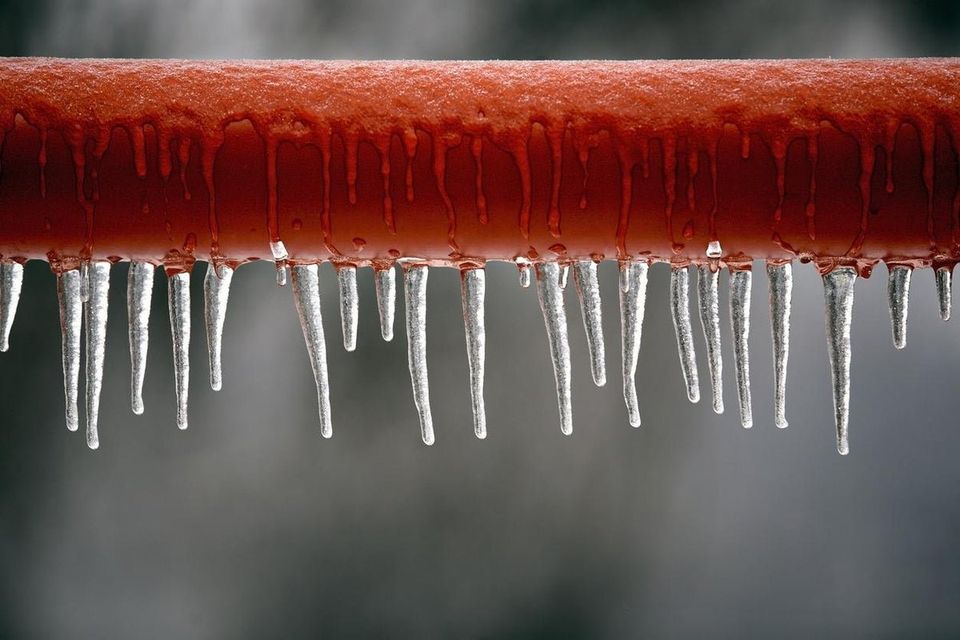Important Tips to Avoid Frozen Pipes in Cold Weather: Specialist Guidance
Important Tips to Avoid Frozen Pipes in Cold Weather: Specialist Guidance
Blog Article
Listed here below you might get a lot of great insight with regards to Preventing and dealing with frozen pipes.

Cold weather can wreak havoc on your plumbing, specifically by freezing pipelines. Below's how to prevent it from taking place and what to do if it does.
Introduction
As temperatures decrease, the risk of icy pipelines boosts, possibly leading to pricey repair services and water damages. Comprehending how to stop frozen pipelines is critical for homeowners in cold climates.
Understanding Icy Pipelines
What creates pipelines to ice up?
Pipelines freeze when exposed to temperatures listed below 32 ° F (0 ° C) for prolonged durations. As water inside the pipes freezes, it increases, putting pressure on the pipe walls and possibly creating them to rupture.
Threats and problems
Frozen pipes can bring about water disturbances, residential property damage, and expensive fixings. Ruptured pipes can flooding homes and create substantial structural damages.
Indications of Frozen Water Lines
Determining icy pipelines early can stop them from bursting.
Just how to determine icy pipelines
Try to find lowered water flow from faucets, unusual odors or noises from pipelines, and noticeable frost on revealed pipelines.
Avoidance Tips
Insulating vulnerable pipes
Wrap pipes in insulation sleeves or utilize warmth tape to protect them from freezing temperatures. Focus on pipes in unheated or external locations of the home.
Home heating strategies
Maintain interior spaces effectively heated, specifically locations with pipes. Open cabinet doors to permit cozy air to distribute around pipes under sinks.
Protecting Exterior Pipes
Yard hose pipes and outdoor taps
Detach and drain yard hose pipes prior to wintertime. Install frost-proof faucets or cover exterior faucets with shielded caps.
What to Do If Your Pipes Freeze
Immediate activities to take
If you think icy pipelines, keep taps open to alleviate pressure as the ice melts. Utilize a hairdryer or towels soaked in hot water to thaw pipes slowly.
Long-Term Solutions
Architectural adjustments
Consider rerouting pipes far from outside walls or unheated locations. Include added insulation to attic rooms, cellars, and crawl spaces.
Upgrading insulation
Buy high-grade insulation for pipelines, attics, and wall surfaces. Appropriate insulation helps preserve regular temperatures and reduces the danger of icy pipes.
Conclusion
Stopping icy pipes needs proactive actions and quick responses. By comprehending the causes, indications, and preventive measures, homeowners can secure their plumbing during winter.
6 Proven Ways to Prevent Frozen Pipes and Protect Your Home
Disconnect and Drain Garden Hoses
Before winter arrives, start by disconnecting your garden hoses and draining any remaining water. Close the shut-off valves that supply outdoor hose bibs and leave the outdoor faucet open to allow any residual water to drain. For extra protection, consider using faucet covers throughout the colder months. It’s also important to drain water from any sprinkler supply lines following the manufacturer’s directions.
Insulate Exposed Pipes
Insulating your pipes is an effective way to prevent freezing. Pipe insulation is readily available at home improvement stores and is relatively inexpensive. Pay close attention to pipes in unheated areas such as the attic, basement, crawl spaces, or garage. Apply foam insulation generously to create a buffer against the cold. You can also wrap your pipes in heat tape or thermostat-controlled heat cables for added warmth.
Seal Air Leaks
Inspect your home for any cracks or openings that could let in cold air. Seal any holes around the piping in interior or exterior walls, as well as the sill plates where your home rests on its foundation. Additionally, make sure to keep your garage door closed unless you’re entering or exiting. Leaving it open creates a significant air leak that can lead to frozen pipes.
Allow Warm Air Circulation
During cold snaps, it’s essential to allow warm air to circulate evenly throughout your home. Leave interior doors ajar to promote better airflow. Open kitchen and bathroom cabinets to help distribute heat consistently around the rooms. If you have small children or pets, be sure to remove any household chemicals or potentially harmful cleaners from open cabinets for safety.
Let Faucets Drip
A small trickle of water can make a big difference in preventing ice formation inside your pipes. When temperatures drop significantly, start a drip of water from all faucets served by exposed pipes. This continuous flow helps prevent the water from freezing. Additionally, running a few faucets slightly can relieve pressure inside the pipes, reducing the chances of a rupture if the water inside does freeze.
https://choateshvac.com/6-proven-ways-to-prevent-frozen-pipes-and-protect-your-home/

Hopefully you liked our part on How to Prevent Your Pipes From Freezing. Thanks for taking time to read through our content. In case you liked our blog entry if you please be sure to pass it around. We take joy in your readership.
Additional Resources Report this page